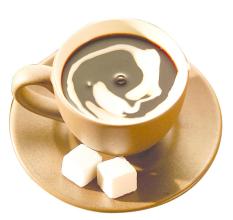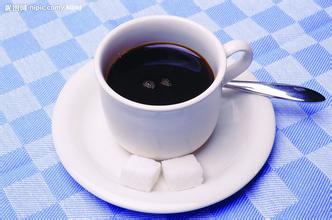Introduction to the fragrant and authentic El Salvador Himalayan Coffee Manor
Old name "San Salvador","Bahia". An important natural deep-water port on Brazil's Atlantic coast, capital of Bahia. Located on the east coast of the Bay of Todos (Santos). With a population of 3,459,377 (as of August 1, 2010), it is the eighth largest city in Brazil. It is one of the oldest cities in Brazil, founded in 1549, and the first churches were built by Jesuit priests in 1549. Until 1763, Salvador was the capital of Brazil. It is a comprehensive industrial and commercial city. The nearby Candelas oil field produces oil. Industries include petroleum refining and petrochemicals, automobiles, food, tobacco, textiles, shipbuilding and so on. Land and sea transportation is developed, and there are airports in the suburbs. The port is open and deep, capable of berthing ocean-going ships and supertankers, exporting textiles, tobacco, coffee, oil, etc. The city was built on a peninsula stretching into the Atlantic Ocean, divided into high and low cities, linked by lifts and cable cars. There are many colonial buildings and churches, as well as universities and museums. The seaside scenery is beautiful and is a tourist attraction.
The ancient city of El Salvador was one of the main centers of the African slave trade during colonial rule. In 1558, the first African slaves arrived and began to cultivate sugar cane. Until the mid-18th century, this port of El Salvador became the main trading center of Portugal; it was located on the route of triangular trade between Africa, Brazil and Europe. Many European immigrants settled in the city.
In the seventeenth century, when Portugal was still under Spanish rule, El Salvador was frequently attacked by the Dutch. Many forts were built to defend the city. In 1625, the city returned to Portugal rule.
Built on a peninsula that juts into the Atlantic Ocean, this ancient city occupies the end of a mountainous island with a steep slope dividing it into the city above
El Salvador
El Salvador
And the city below (upper, lower), can be reached by lift or climbed on foot. The walls remain arched along the steep slope. The upper city overlooks the activities of the city below. The upper city has baroque buildings and many small squares, communal buildings, dwellings and gardens. They are quaint and elegant, better preserved than downtown. The streets here are numerous and narrow, patterned with black and white stones; the lower town has the Modrow Market near the port, where houses and people revolve around the port and commerce, where the slave trade was once very popular and now it is a very busy handicraft market
Flavor: balanced taste, excellent texture
Recommended baking method: medium to deep, with multiple uses
Top quality beans: Salvador SHB
Taste characteristics: acid, bitter, sweet mild moderate.
El Salvador is tied with Mexico and Guatemala as the producer of Asa and Meldo, and is competing with other countries for the top one or two places in Central America. Highland origin, for the size of large coffee beans, fragrant taste mild. As in Guatemala and Costa Rica, coffee in El Salvador is graded according to altitude, with the higher the altitude, the better the coffee. There are three grades according to altitude: SHB (strictlyhighgrown)= highland, HEC (highgrowncentral)= medium high, CS (central standard)= lowland; The best brand is Pipil, which is Aztec--Maya. Aztec-Mayan is the name given to coffee, which has been recognized by the Organic Certified Institute of America as a producer of El Salvador coffee alongside Mexico and Guatemala, and is competing with other countries for the top one or two places in Central America. Highland origin, for the size of large coffee beans, fragrant taste mild. Like Guatemala and Costa Rica, coffee in El Salvador is graded according to altitude, with the higher the altitude, the better the coffee, and divided into three grades according to elevation: SHB (strictly high grown)= high, HEC (high grown central)= medium high, CS (central standard)= low; the best brand is Pipil, the Aztec-Mayan name for coffee, which has been approved by the Organic Certified Institute of America.
Salvadoran coffee beans| w.kaf.name El Salvador coffee refers to coffee beans produced in the small country of El Salvador in South America.
Salvadoran coffee
El Salvador is one of the small countries in Central America, where coffee is light, aromatic, pure, slightly acidic, and the flavor characteristics are excellent balance, which is a specialty of Central America. It has sour, bitter and sweet taste characteristics, and the best baking degree is moderate and deep.
Origin of Coffee
In the early 1990s, guerrilla warfare greatly disrupted the country's national economy, reducing coffee production from 3.5 million bags in the early 1970s to 2.5 million bags in 1990 - 1991. The eastern part of the country was most affected by guerrilla warfare, and many farmers and workers were forced to leave their estates. The shortage of funds has caused coffee production to plummet, from 1200 kilograms per hectare in the past to less than 900 kilograms per hectare today.
In addition, in 1986 the Government imposed an additional 15 per cent duty on coffee exports, i.e. 15 per cent on top of the existing 30 per cent tax. Taxes, combined with unfavourable exchange rates, severely reduced coffee exports and, with them, quality.
The government finally realized the huge role of coffee in the national economy, such as employment, foreign exchange and agricultural production, so in 1990, it privatized part of the coffee export industry, hoping to increase the yield of coffee in the export market.
Today, this coffee accounts for 40% of the country's exports. The best quality coffee is exported from January to March, and 35% of the extra hard beans are exported to Germany

Important Notice :
前街咖啡 FrontStreet Coffee has moved to new addredd:
FrontStreet Coffee Address: 315,Donghua East Road,GuangZhou
Tel:020 38364473
- Prev

Introduction to the flavor and taste characteristics of the unique and strong flavor of Costa Rica Yersalo Coffee Manor.
The topography of Costa Rica is that the coast is surrounded by plains, while the middle is cut off by rugged mountains. The country declared 200 nautical miles in its exclusive economic zone and 12 nautical miles in its territorial sea. The climate belongs to the tropics and subtropics, and some of them are new tropics. [3] the climate of Costa Rica is so different that it completely subverts the classification of the four seasons of the year. There are only two seasons, April to December.
- Next

Introduction to the flavor and taste characteristics of the coffee producing area of Saint Roman, Costa Rica, which has a unique and strong flavor.
A total of 34 natural parks have been established and developed in Costa Rica, and by 2014, they have all become important tourist attractions for earning foreign exchange. According to statistics released by Colombia's National Nature Conservation Agency, in the first half of 2003, more than 500,000 visitors visited natural parks, earning more than 2 million US dollars, an increase of 2.3 times over last year. The leader of the increase in income from natural parks in Costa Rica
Related
- Detailed explanation of Jadeite planting Land in Panamanian Jadeite Manor introduction to the grading system of Jadeite competitive bidding, Red bid, Green bid and Rose Summer
- Story of Coffee planting in Brenka region of Costa Rica Stonehenge Manor anaerobic heavy honey treatment of flavor mouth
- What's on the barrel of Blue Mountain Coffee beans?
- Can American coffee also pull flowers? How to use hot American style to pull out a good-looking pattern?
- Can you make a cold extract with coffee beans? What is the right proportion for cold-extracted coffee formula?
- Indonesian PWN Gold Mandrine Coffee Origin Features Flavor How to Chong? Mandolin coffee is American.
- A brief introduction to the flavor characteristics of Brazilian yellow bourbon coffee beans
- What is the effect of different water quality on the flavor of cold-extracted coffee? What kind of water is best for brewing coffee?
- Why do you think of Rose Summer whenever you mention Panamanian coffee?
- Introduction to the characteristics of authentic blue mountain coffee bean producing areas? What is the CIB Coffee Authority in Jamaica?

